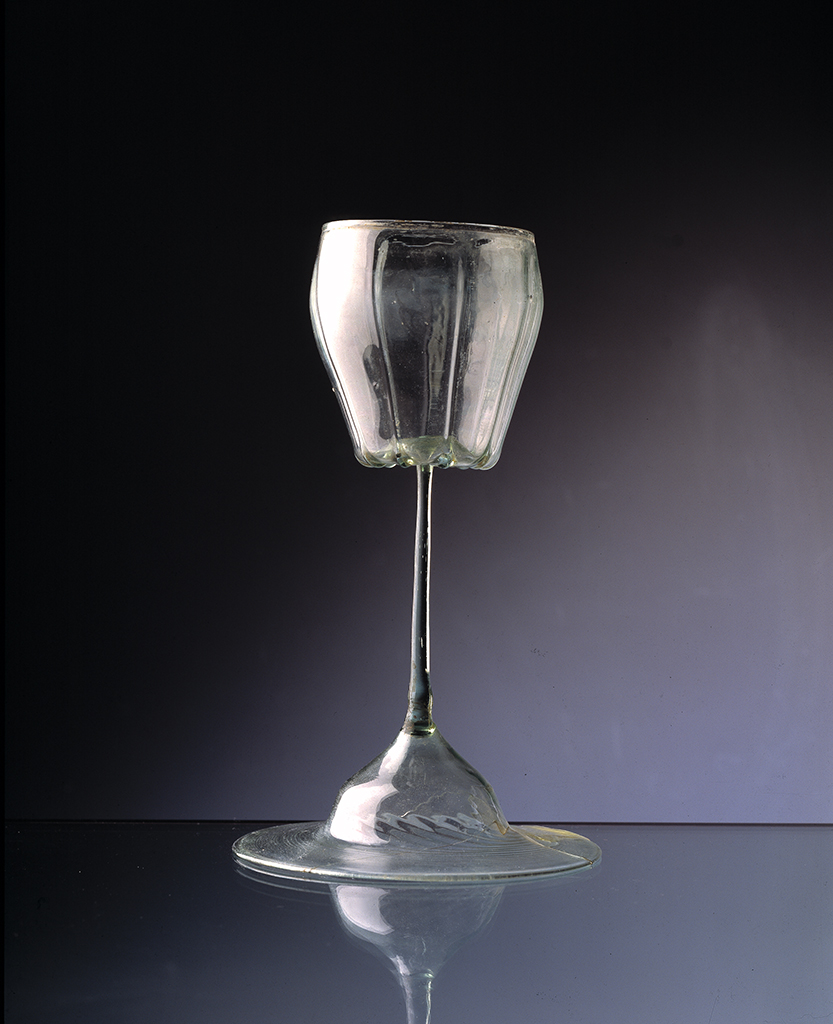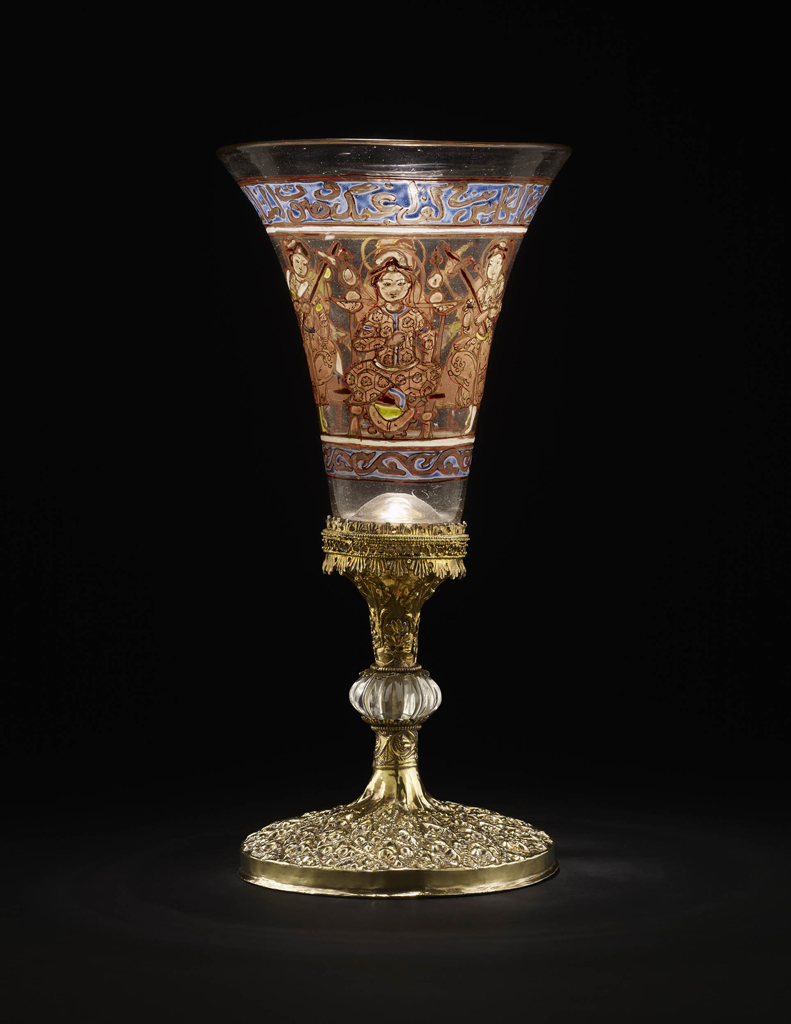Arguably the most beautiful goblet made in western Europe before the Renaissance is the one found in the church of the Augustinians in Rouen, France (Fig. 11). This remarkably fragile object, which is dated to the 14th century, was found, nearly intact, during the demolition of the church in 1949. (St. Augustin had been badly damaged by bombing in World War II.)
The method of construction—specifically, how the stem was formed—is unprecedented in glassblowing history, and a similar technique was not reinvented until the 20th century in Venice.
The St. Augustine Rouen Goblet shows the use of an oven (called a pick-up box, or a top-loading annealing oven) to keep the cup hot while the foot is being formed. When the original object was made, another worker probably kept the cup hot while it was still attached to its punty.


